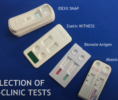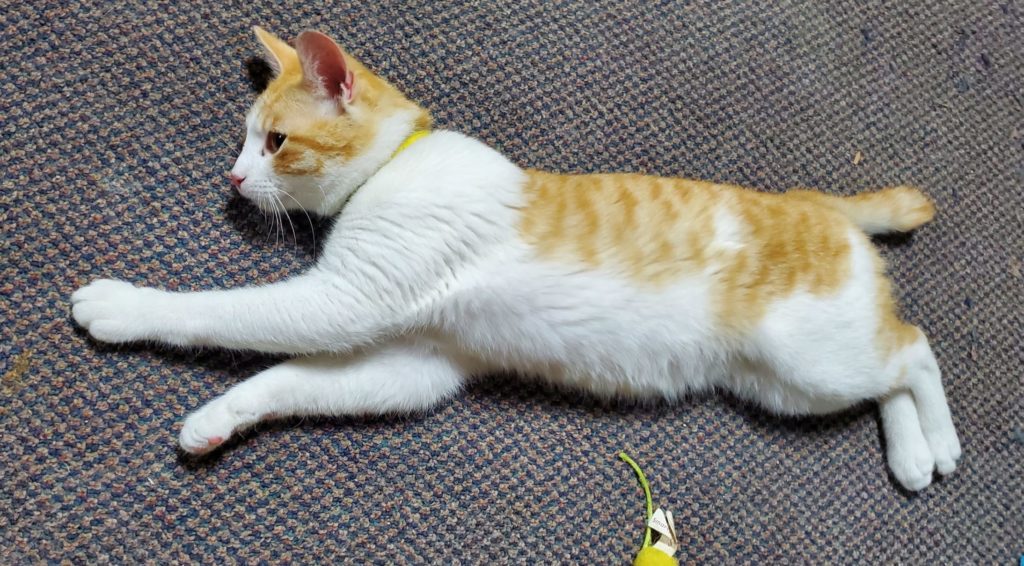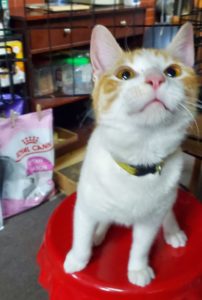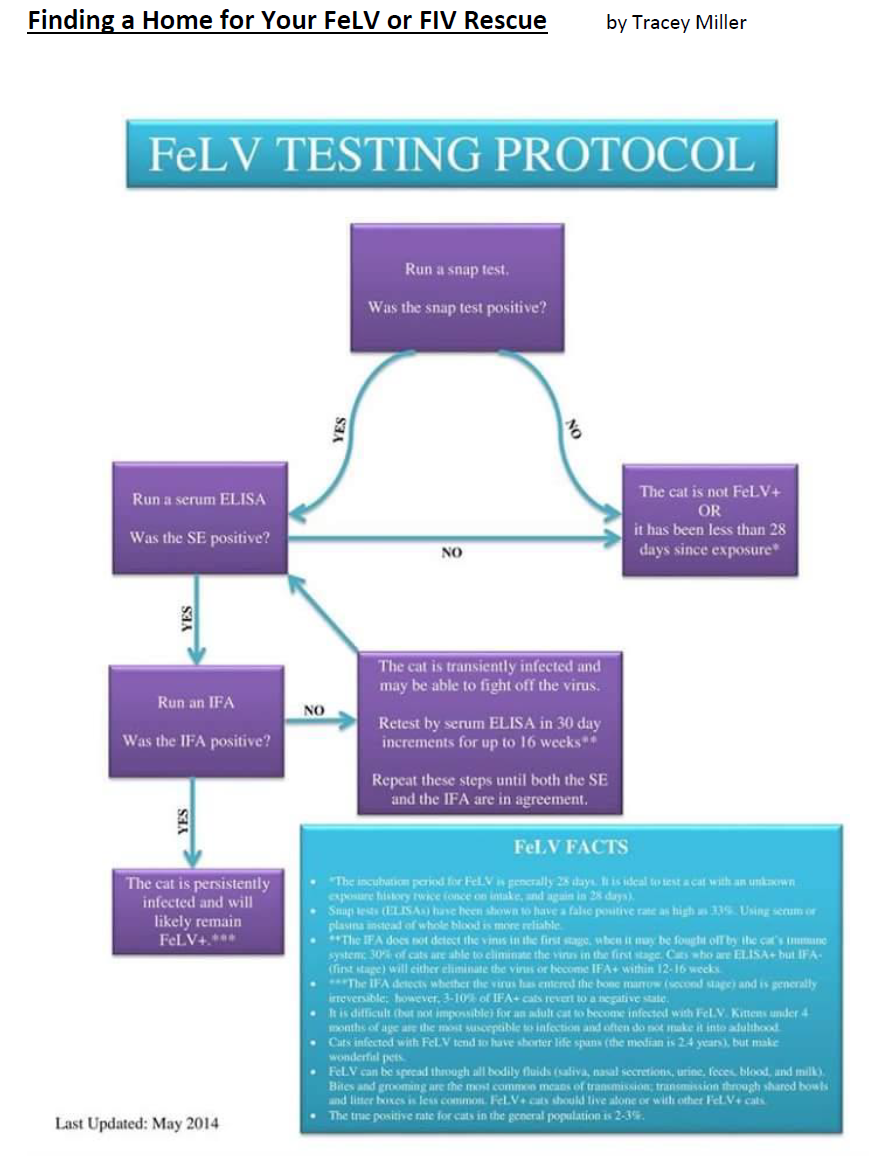My Cat Tested Positive For Feline Leukemia, Now What?
TXCAT ORG | Posted on |


This post is limited to discussion about factors involved in testing and determining whether or not your cat actually has Feline Leukemia Virus (FeLV). Other posts will discuss the care and feeding of FeLV cats to give them their best cat life.
I tend to trust the experience of shelters, rescues and organizations dedicated to saving cat lives because they deal with a high volume of cats and their experience and advice is often practical and may be more informed than a single vet or entity that only sees a limited volume of FeLV cases compared to them.
If you have any experience with one or more FeLV kittens or cats you can get some great education by watching this 50-minute video from the 2019 Austin Pets Alive conference.
It even discusses how much – or how little – to worry about contagiousness in a multicat environment. VERY INFORMATIVE.
The Duncan Home For Wayward Cats had our first 8-month old kitten intake who tested positive for Feline Leukemia (FeLV) (Joshua). Unfortunately, he had already been mixed in with 45 other cats from intake 03/18/2022 to his vet appointment 04/06/2022 and before this was known.
I know. My bad. Maybe I should have tested Josh before intake, but after watching the video above, then maybe not.
I am not a rescue, just an individual trying to help Texas cats in need, friends, and neighbors, so I am still learning (THE HARD WAY) about the protocols and best practices that should be applied in a 45+ cat environment.
I am faced with all kinds of questions, worries, concerns, and curiosities about this illness for the little one who has tested positive (Joshua) as well as 45 other cats that he had mixed with for 3 weeks before being tested, and then isolated.
Needless to say, I am schooling myself on FeLV and researching answers to questions that I have at this stage.
I plan to document and publish our experience for whatever value it may provide to others with FeLV+ cats and all the questions that go along with it.
So far, I have found a lot of inconsistent information, a lot of generalized information, and of course fact based information, but very little absolute information.
It seems that in matters of biology, medicine, and disease there are very few absolutes and a whole lot of possible, typically, recommended, commonly, probable, maybe, percentages, etc.
Inconclusive terminology like this ultimately means the kitten/cat owner must sort through available information they feel necessary to make an informed decision and then arrive at their decisions about what to do OR simply trust the advice of a vet which may OFTEN be to euthanize upon positive test results.

Some of the following summary answers to questions are excerpts from sites of others who have done more extensive research than I and who have had more experience than I. Their summary statements at least provide a perspective from which to explore the subject deeper if desired. I like digging all the way through the planet on a subject, but time is a limiting factor to do so, therefore shortcuts to some answers are inevitable.
- On this topic the sources of information that I referred to seem to agree. (links to a few listed below)
Because false-positive test results routinely occur, cat owners may have questions that beg to be answered.
- How many false positives occur for the type of test used?
- Is my cat one of the anticipated false positives for the test used?
- Is there a protocol for verifying test results?
- Which test is the most accurate and least likely to provide misleading results? (Of course, if we only listen to test manufacturers each may claim their test is superior, so 3rd party experience with various tests can provide real-world experience to consider.)
U.C. Davis: All Tests Are Not Created Equally
There is a significant difference in accuracy between the types of tests available. Although the IDEXX SNAP test outperformed three other point-of-care tests in a 2017 study evaluating sensitivity and specificity led by Dr. Julie Levy et al, it was noted that all available tests have some intrinsic level of inaccuracy.
The FeLV/FIV in-house tests are less accurate when testing all healthy cats.
No test is perfect. This fact, combined with the low prevalence of these diseases (<3% nationwide), means that the chance of a false positive result increases when testing all healthy cats.
Here is a helpful calculator to illustrate the chances of false positive and false negative results when disease prevalence, test sensitivity and specificity are taken into account. Try this exercise: enter a disease prevalence of 3% and use the sensitivity and specificity for the FeLV IDEXX SNAP test from their website (98.6% and 98.2% respectively). If you test 1000 cats you will see that 17 out of the 47 cats that test positive do not actually have FeLV. That means that over 36% of positive results are actually false positives. In areas with a prevalence lower than 3% the number of false positives increases. On the flip side, a negative test is very reliable – however, see the next point.
The accuracy of diagnostic testing also falls dramatically when tests are used as screening tools on healthy animals rather than being driven by indications in the history or clinical signs that suggest the particular disease.
Since vaccination for a disease introduces a diluted source of the disease which is designed to teach our immune system how to fight the disease without inducing the disease, it is a reasonable question to ask if vaccination could result in a positive test afterward and if so for what period of time is that likely?
- UC Davis Koret Shelter Medicine Program says, “FeLV testing detects for antigen (virus itself) vs. FIV testing for antibody (immune system's response to disease).
- Cornell University College of Veterinary Medicine says,“FeLV vaccines will not cause false positive FeLV results on ELISA, IFA, or any other available FeLV tests.”
HOWEVER - VCA Animal Hospitals says, “False positive results for FIV may occur if a cat has been vaccinated against FIV, since the antibody test does not differentiate between antibodies produced by the disease and vaccine-induced antibodies.”
30-60 days are indicated by multiple sources as time periods that FeLV commonly needs to get worse or for a cat's immune system to suppress it, so waiting that time period before testing again for confirmation may provide more accurate insight into the cat's condition.
However, as the conference video above emphasizes, there may be little value in repeat testing.



Leave a Reply